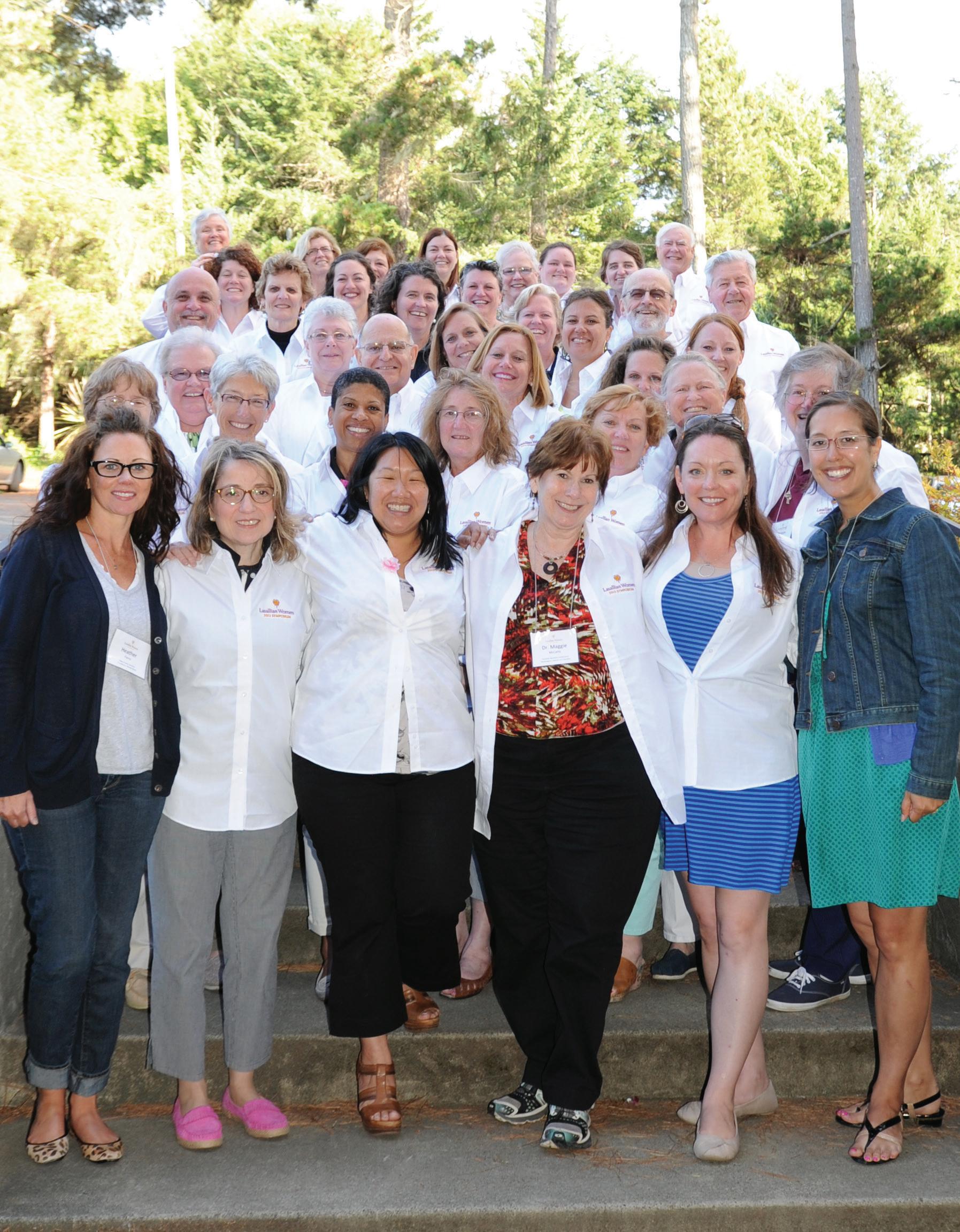
5 minute read
Lasallian Women: Celebrating the Past, Present and Future
BY KATHLEEN CALDER
As I begin my 33rd year of teaching at De La Salle High School in New Orleans, LA, I am amazed and fascinated at the wisdom and foresight of the Brothers of the Christian Schools. I have watched them not only accept female teachers into their schools, but come to truly value our involvement in their work of educating all children

I have witnessed this transformation firsthand from being invited to the 1983 Huether Lasallian Conference as a young woman new to Lasallian education, to being involved in the Buttimer Institute of Lasallian Studies as a participant then staff member, and now, attending the first Lasallian Region of North America (RELAN) Women’s Symposium. Being part of these incredible experiences has marked times of growth and developing a deeper understanding of the mission for me.

Brother Álvaro set the tone of the assembly by affirming the long-standing value of women in Lasallian ministry. Presentations and discussions highlighted how women have always been involved in the mission—from the influential women in St. La Salle’s life and quiet supporters of the early mission to women embracing their roles as Lasallian Partners today. The Brothers shared with us their personal experiences of how women have influenced and enhanced their lives and service, and participants shared with them the powerful impacts Brothers have had on us. It was this type of sharing and mutual appreciation that helped make this gathering such a moving experience.
To spotlight women in the mission, Trish Carroll, who organized the Institute’s inaugural Women’s Symposium held in the Pacific-Asia Regional Conference (PARC) in 2012, sent a recorded presentation that led to a new – or in some cases, renewed – appreciation for those female voices in De La Salle’s life and the Lasallian mission. She guided us through a look at the earliest female influence in St. La Salle’s life: his mother, Nicole Moët de Brouillet, his grandmother, and later the Sisters of the Child Jesus and “Sister” Louise in Parmenie, who inspired (and pushed) De La Salle to return to his work when he was despondent at the seeming failure of the mission. Brother Gerard Rummery, FSC, noted Lasallian scholar, led us in a discussion analyzing the letters De La Salle wrote to female religious.

After this study of history, we looked at the contributions of various women in the mission today – as teachers, counselors, administrators, and those in other positions. In small groups, we discussed the contributions of those with whom we work and how they strengthen our schools and offices individually, Regionally, and worldwide. We also shared ideas on new ways to further connections between Lasallian schools in the Region.
From a personal standpoint, this Symposium meant a lot to me. At that Huether Conference in 1983, the discussion was about what terminology would be used for lay faculty in the Brothers’ schools, as well as their part in the mission. At that time, I was something of a rarity – a lay faculty member who was a woman. It is amazing to see how far we’ve come in our understanding of what female teachers, counselors, and administrators offer the students in Lasallian schools: compassion, understanding, a “mothering” instinct that supplements the “big brother” concept as conceived by St. La Salle and a gentleness in handling problems.

Being part of this evolution from Brothers only to inclusion of lay men and women in Lasallian schools has been an incredible experience for me. To work with Brothers Álvaro, Robert, Gerard, Ronald Gallagher (immediate past president of Saint Mary’s College), and Ed Phelan (Auxiliary Visitor of the District of Eastern North America) at the Symposium and to see their dedication to the mission and their acceptance of women in the work has been most gratifying. We are now a major part of the mission – not the rare female on staff.
Looking back on this journey which I have experienced, I am reminded of a conversation I had at Buttimer in 2003, when one of the attendees, a nun, told me she was impressed that the Brothers had the foresight to begin teaching their lay colleagues the basics of the Lasallian history, mission, and style of prayer. She only wished her own order would even consider this approach to inculcating its founder’s mission and story into lay teachers.
AFTER THIS SYMPOSIUM, I AM ASSURED THAT OUR MISSION IS ALIVE AND INNOVATIVE –AS ST. LA SALLE’S EARLY SCHOOLS WERE. WHAT A TRADITION. WHAT A GIFT TO EDUCATION TODAY. AND I HAVE BEEN ABLE TO EXPERIENCE THE GROWTH OVER MY YEARS OF SERVICE WORKING WITH THOSE CHILDREN ENTRUSTED TO OUR CARE.
To make my Lasallian journey even more personal, my mother told me, after I'd been teaching at De La Salle for about five years, “You know, Granpère was taught by les frère as a child in France.” She had never mentioned this before. I was so surprised. And, now, life has come full circle, and I am teaching and actively participating in a Lasallian school, continuing a family legacy of education with the Brothers and lay Partners.
Read more about the Symposium and see more pictures at http://lasallian.info/2013/07/12/making-history-inspiring-lasallian-women
Kathleen Calder serves at De La Salle High School in New Orleans, LA, as an English/publications teacher, the yearbook advisor, and public relations director.
Note: All Women’s Symposium photos by Kathleen Calder.





